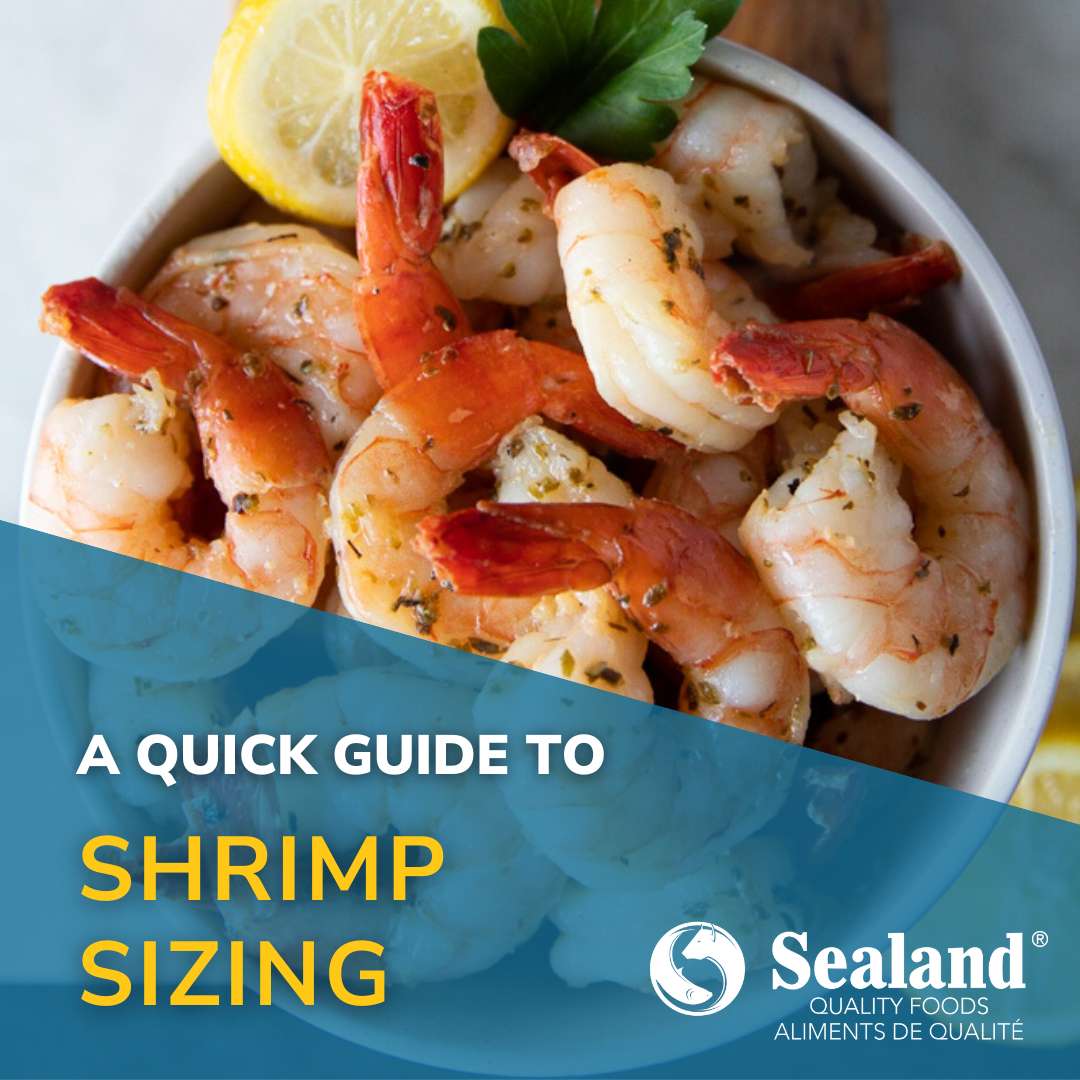Shrimp are one of the most popular seafood items in the world and a firm favourite here in Canada. With their sweet, delicate flavour and meaty texture, they pair perfectly with a huge range of dishes. High in protein and low in fat, these nutritious morsels of goodness can be grilled, air-fried, boiled, sautéed, barbecued or baked with ease.
With such culinary versatility, the only difficult part about using shrimp in your dishes is understanding the different sizes! That’s why we put together this quick guide explaining how shrimp are sized, what the different terms mean, and how to select the best shrimp for your needs.

What Does the Count Mean in Shrimp Sizing?
Shrimp are most accurately sized by the count, which is usually expressed as a range, such as 16/20 or 31/35. While this can look complicated at first glance, there’s no need for any panicked mental arithmetic in the seafood aisle.
The count simply describes the number of shrimp per pound.
So for 16/20 count shrimp, there would be 16 to 20 shrimp per pound, while an order of 31/35 count shrimp would contain 31 to 35 shrimp per pound. The range accounts for the slight variation in size between the shrimp within the batch.
Just remember - the lower the count, the larger the shrimp!
What do the U and P Stand for in Shrimp Sizing?
Sometimes, the count is preceded by the letter U or P. Again, these mysterious codes are straightforward once you understand them.
The U simply stands for Under, meaning there are less than that number of shrimp per pound. P on the other hand, stands for Plus, meaning there are more than that number of shrimp per pound. Common examples include U10 shrimp which denotes that there are less than 10 shrimp per pound, while P40 means there are more than 40 shrimp per pound.

Heads or Tails?
Shrimp can be up to two sizes bigger with the head and shell left on, and 1 size bigger with the tails. This means that 16/20 count shrimp with their heads and shells will end up being closer to 26/30 count once they have been cleaned, peeled and deveined.
How Colossal Are Colossal Shrimp?
While the count is the most accurate way of sizing shrimp, you’ll also commonly see shrimp classified by names like Colossal. To give you a rough idea of how these classifications translate to counts per pound and serving sizes, see our conversions of the most commonly used ones below. It’s important to note though that these names are not standardized within the seafood industry and can vary by region or supplier.

What Size Shrimp Do I Need?
The size of shrimp you ultimately choose depends on how you plan to cook and serve them. Larger shrimp are better for grilling, broiling, air frying or baking, as they can withstand higher heat without drying out. Smaller shrimp are more suited to stir-frying, sautéing or boiling, as they cook quickly and evenly.
Colossal (U10 or larger) - These humongous shrimp are the perfect choice when you want to really wow your dinner guests with a seafood extravaganza. Ideal for grilling on the BBQ or baking in the oven with your favourite seasonings. For a true showstopping shrimp experience, try our gargantuan, 4/6 count Colossal Raw Black Tiger Shrimp.
Extra Large (11/20) - While slightly smaller than their colossal brethren, these 3-bite shrimp are still impressive centerpieces to any dish. Extra Large Cooked Shrimp are the perfect choice for a quick and elegant shrimp cocktail, while air frying these Raw Red Wild Argentina Shrimp in their shells provides a delicious main dish that can be served alongside a simple salad.

Large (21/30) - Perhaps the most versatile size of shrimp, these 2-bite shrimp are an excellent choice for stir-fries and Asian-inspired dishes like this Chili Lime Shrimp recipe. Large Raw Shrimp are ideal for soaking up flavour as they cook, while Large Cooked Shrimp can simply be thawed and served for ultimate convenience.
Medium (31/40) - These 1-bite shrimp are perfect when you want to add taste and texture without overpowering the other elements of the meal. A delicious protein option that compliments dishes with highly flavourful ingredients, such as shrimp tacos or pasta dishes like this Homemade Shrimp and Spinach Alfredo.
Small (P40 or smaller) - Small shrimp are best used in soups, stews and gumbos. Their natural umami taste profile adds a richness and depth of flavour to any broth. Try using them in your next Seafood Chowder.


